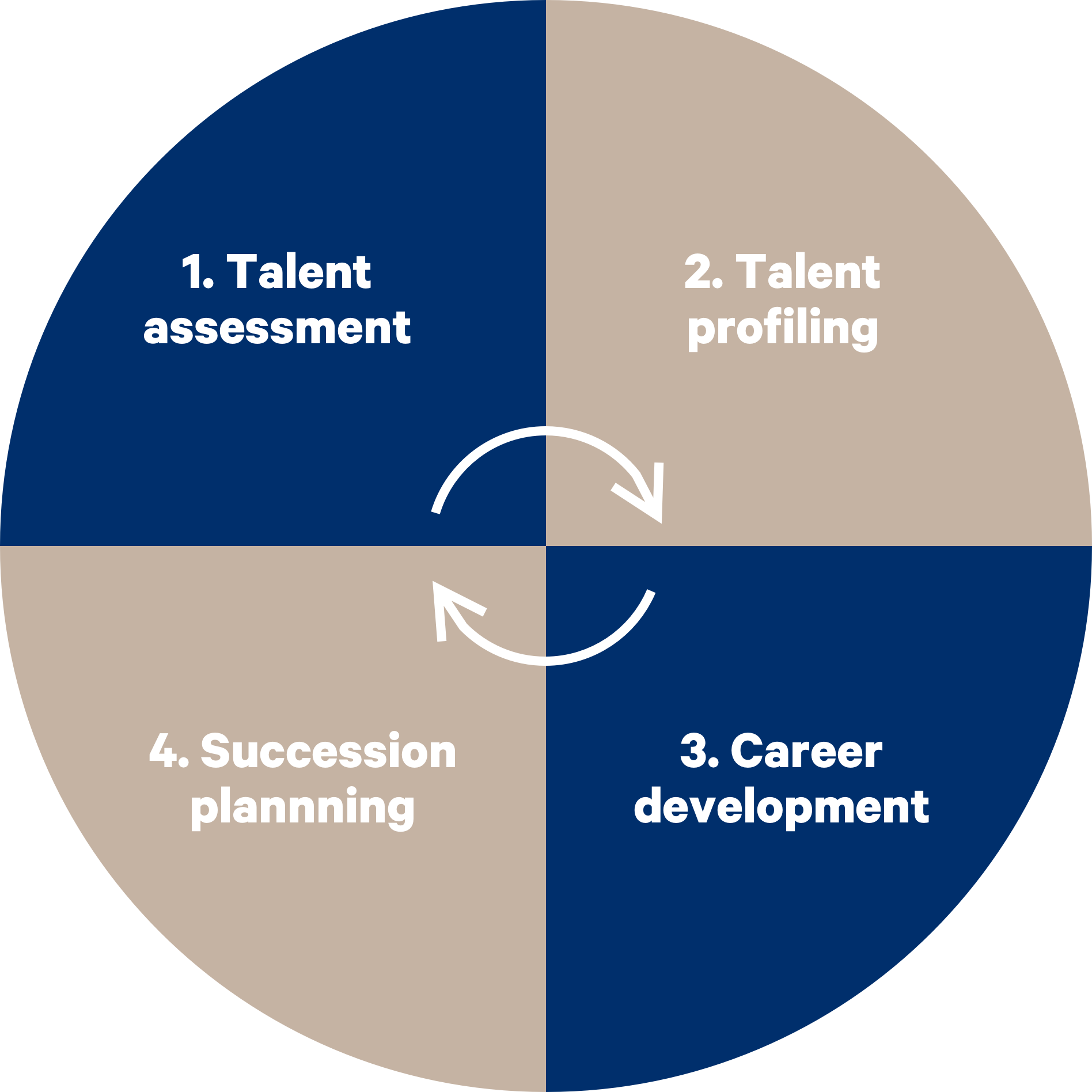Talent retention
As part of ongoing development and retention strategies we annually assess performance and people’s potential. This process allows us to create structured career development pathways and enables our people to seek development opportunities that support their career goals. This process is described below.
Talent retention process

Identify, assess and
rank our talent –
performance
and potential
Thoroughly
understand
strengths, needs,
mobility,
transferable
strengths
Validate, test and
review management
bench strength
Validate and
champion career
development maps
Development pathways guide career goals as our employees progress in their career. Key pathways include mentoring and coaching, structured formal learning opportunities, on-the-job learning and secondments across the business.
While external talent recruitment is important, we continuously seek to develop talent from within the business. We do this by building and investing in people by supporting various and diverse career paths that:
- Improve our line of sight on development needs and increase the bench strength of the leadership pipeline against internal talent
- Identify talent gaps that can be filled utilising internal capability and skills
- Identify opportunities for targeted development activities
- Ensure we have the best talent engaged within and across the business.
We also ensure succession planning is in place to enable talent development and enhance delivery performance for our customers.
We ensure a robust remuneration and reward strategy that entices and attracts new talent and provides strong recognition of performance for existing talent to remain with Downer. Key factors which are incorporated into our remuneration and rewards system include:
- Benchmarking positions utilising third party market data to provide a comparative analysis of our remuneration offering against industry
- Utilising the outcomes of this benchmarking exercise to develop remuneration packages which attract and retain industry leading talent
- Offering reward opportunities during employment that provide financial and/or team based recognition for employees who exhibit desired behaviours and/or deliver project outcomes
- Offering short-term and long-term incentives where appropriate, with a focus on key roles.
The turnover of employees at Downer’s primary locations was less for women than men, with 17 per cent versus 24 per cent turnover respectively over the period.



